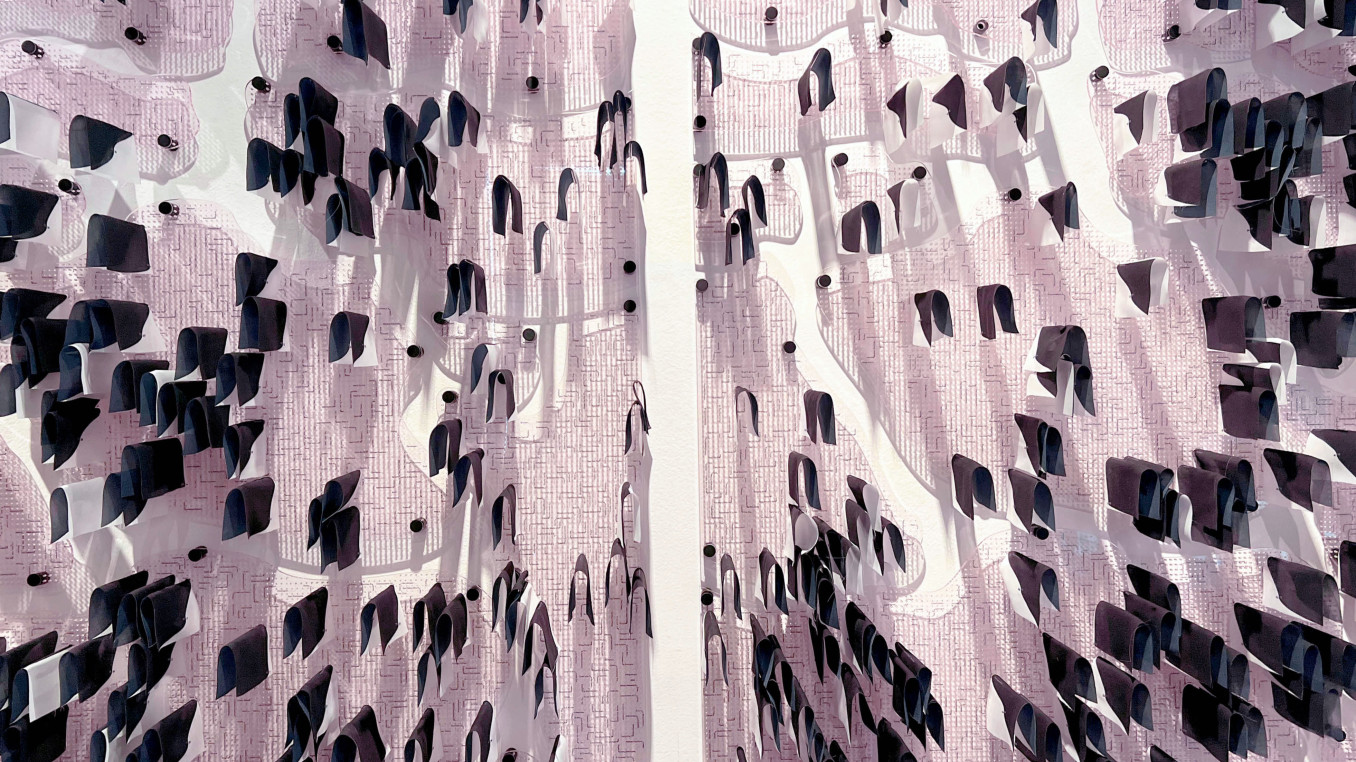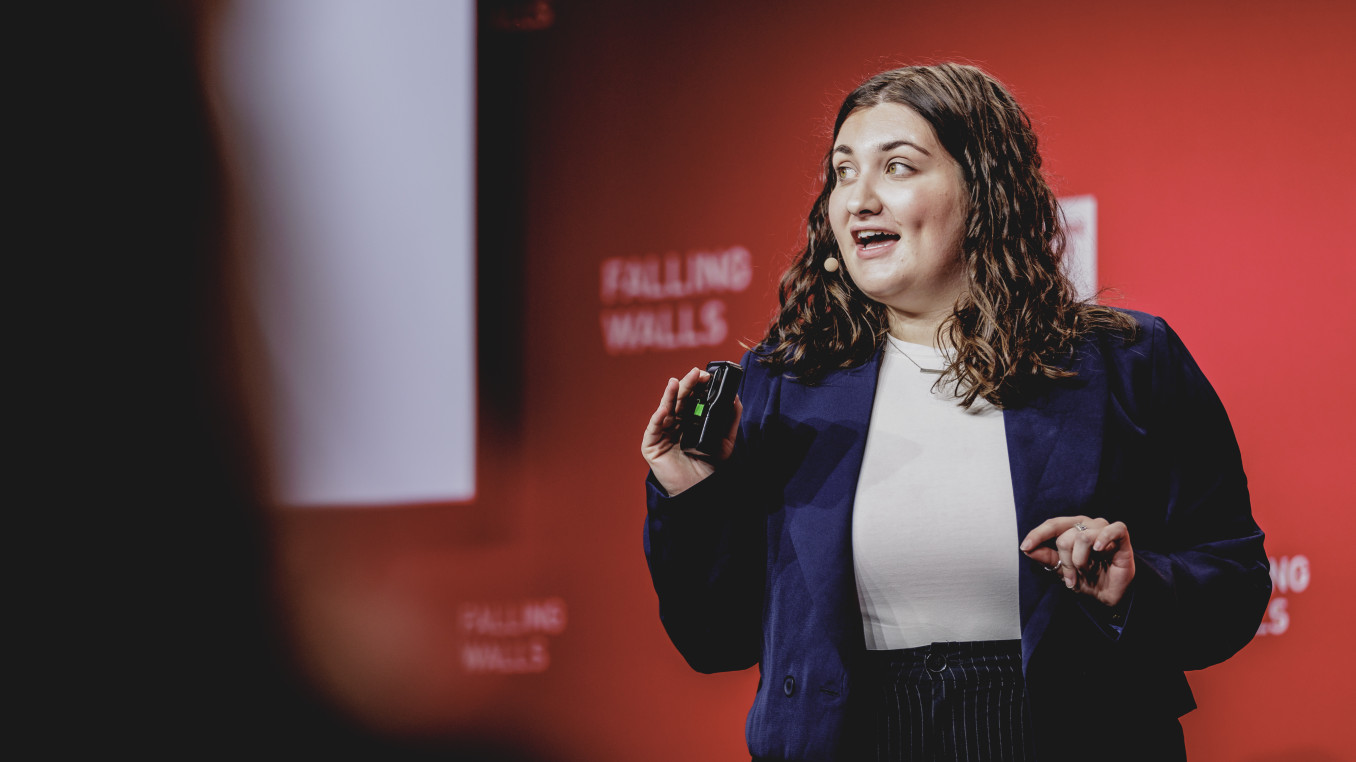Breaking the Wall of Lavaforming
Breaking the Wall of Lavaforming
Global Call 2025 Finalist Interview: Art & Science
Arnhildur Palmadóttir and Arnar Skarphéðinsson are Icelandic architects whose work explores how design, technology and sustainability can shape future ways of building and living. In addition to founding sap architects, Palmadóttir also runs the Icelandic branch of the Danish architecture and innovation company Lendager, which specialises in sustainability and circularity in construction. In 2024, she won the Nordic Council's Environmental Award 2024 for interdisciplinary collaboration and focus on recyclable building materials. Skarphéðinsson, a graduate of the Icelandic University of the Arts, contributes to sap architects with concept development, 3D visualisation and speculative design projects, including the lavaforming project showcased at Design March 2022. He believes architecture holds the power to envision a better future and uses his practice to explore how that future might take shape.
Which wall does your research or project break?
Our project breaks down the barrier between architecture and geology. It aims to use molten lava as a building material, transforming it from a destructive force that threatens infrastructure and towns into a resource capable of generating its own energy.
One of our goals is to inspire collaboration between architects, geologists and engineers, which is essential for this vision to be realised. Working with molten lava at extreme temperatures requires innovation in material science and engineering – progress that might not happen without a speculative architectural concept.
As architects, our concerns are primarily environmental and political. We believe that living standards and the quality of buildings are being intentionally eroded by a system that prioritises profit, even as the planet becomes increasingly uninhabitable. Our project is not meant to be a magical solution to these problems, but rather a catalyst to rethink the economic system that governs our society.
What is the main goal of your research or project?
Our project suggests new systems and ways of constructing cities and we work to simulate a future where our ideas have been applied. We want our project to inspire further collaboration between architects and scientists because we believe this is needed to make these sorts of projects possible.
What inspired you to be in the profession you are today?
The interdisciplinary nature of architecture and how it has one foot in science and technology but another in art, philosophy, history and anthropology. Architecture is the concrete form of ideologies, so we believe that societal change can be enacted through how we build and design cities. This makes it a very exciting profession to be in.
What impact does your research or project have on society?
The current systems in construction and architecture are very rigid and streamlined so it’s difficult to operate outside of them. This rigidity is tied to use of materials, regulations and standardised construction methods. It requires a lot of determination and resilience for architects to suggest new ideas and methods. This is especially true when trying to push beyond conventional measures such as building certifications or so-called ‘green’ materials, which may not be genuinely sustainable when examined more closely.
A widely discussed solution to the current crisis is energy transition. In his book More and More: An All-Consuming History of Energy, Jean-Baptiste Fressoz explains that one energy source has never fully replaced another. Instead, new sources are added on top of older ones, and material consumption continues to rise. For example, more wood was used when coal became an energy source, and today we are consuming more fossil fuels than ever – even as we adopt electrification, wind and solar energy.
Currently, 80% of the global energy mix still comes from fossil fuels. Wood energy is twice as significant as nuclear energy, and we are using more raw materials than ever – many of which are becoming increasingly scarce. The current approach suggests that a decarbonised economy can continue to grow. However, we cannot innovate or invest our way out of the energy and material crisis if innovation serves only the profit of corporations rather than the wellbeing of society. We hope our approach inspires a sober analysis of the global situation.
What is one surprising fact about your research or project that people might not know?
That we are a mother and son team of architects. We started the project in 2018 when Arnar was in architecture school: it started as a thought experiment about what could be Iceland’s most sustainable building material. Iceland is not rich in resources that can be used as building materials, but the island is made almost entirely of basalt – lava – found both in solid rock formations and as 0.1 to 15 cubic kilometres of molten lava that rises from the mantle to the surface each year.
What’s the most exciting moment you've experienced over the course of your research or project?
One of the most exciting moments in our research was when we discovered that lava is a mono-material, meaning it can be used for all the elements needed to construct a building. The porous form of lava has insulating properties; the solid, rock-like form has structural strength; and it can even be transformed into a translucent, glass-like material. This means we can shape and form lava in different ways, allowing us to imagine not just a single building, but an entire city made entirely from lava.
Another major highlight was being selected as Iceland’s first representatives at the Venice Biennale of Architecture. It was an honour to be chosen, especially with a project that isn't a traditional piece of architecture but rather a speculative research project. It encouraged people to look both forward and backward – to find technologies and innovations that could help us change how we live and build in a way that is more in sync with nature and its systems.
The exhibition marked a turning point for us. It gave us the opportunity to gather our thoughts, connect with researchers and visualise the project so people would understand the concept and be able to immerse themselves in this story about a city in the future where people have developed the technology to harness and build with lava.


